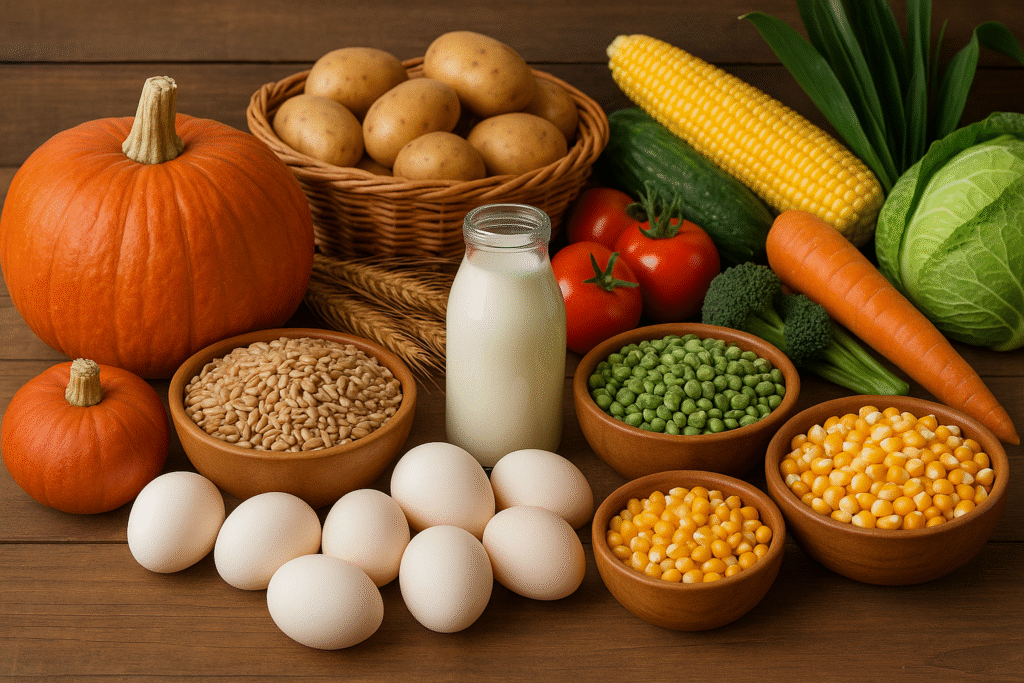Benefits on Agricultural Products
gricultural products remain a cornerstone of global trade, fueling economies, providing livelihoods, and satisfying the growing demand for food and raw materials worldwide. For exporters, tapping into the global agricultural market offers significant opportunities — but also challenges that require strategy, knowledge, and awareness of available benefits.
If you’re looking to boost your agricultural exports internationally, here’s a comprehensive guide on how to leverage the benefits designed for agricultural product exporters to maximize your success.
1. Understand Export Incentives and Government Support
Many countries offer incentives and subsidies to promote agricultural exports. These benefits can take the form of:
- Export subsidies or grants: Financial assistance to reduce the cost of exporting agricultural goods.
- Duty drawbacks: Refunds on customs duties paid for imported inputs used in export production.
- Tax exemptions or reductions: Lower taxes on export-related income or machinery.
- Special agricultural export zones: Designated areas with simplified procedures and benefits.
2. Quality Certifications and Compliance
International buyers often require stringent quality standards and certifications. These certifications not only ensure safety but also add credibility and access to premium markets.
- Global GAP, Organic Certification, Fair Trade, ISO standards: Widely accepted certifications that open doors in Europe, North America, and emerging markets.
- Phytosanitary and sanitary certifications: Essential for fresh produce and perishable goods.
3. Leverage Trade Agreements and Preferential Tariffs
Trade agreements between countries or regions reduce or eliminate tariffs on agricultural exports, providing a competitive edge.
- Free Trade Agreements (FTAs): Countries like India have FTAs with ASEAN, MERCOSUR, and others, reducing export duties.
- Preferential Market Access: Reduced tariffs under WTO schemes like the Generalized System of Preferences (GSP).
4. Utilize Export Financing and Insurance Facilities
Exporting agricultural products involves risks—price fluctuations, perishability, and geopolitical factors. Governments and financial institutions often provide tailored financial products:
- Export credit guarantees: Protect exporters against buyer defaults.
- Pre-shipment and post-shipment finance: Loans to manage working capital needs.
- Crop insurance linked to exports: Protects against natural calamities impacting supply.
5. Invest in Cold Chain and Efficient Logistics
Agricultural exports, especially perishable items like fruits, vegetables, dairy, and flowers, require robust cold chain infrastructure to maintain quality during transit.
- Cold storage facilities
- Refrigerated transport (reefer containers)
- Efficient customs clearance and documentation
6. Branding and Market Positioning
In global markets, branding and differentiation are critical to command better prices and customer loyalty.
- Develop a unique selling proposition (USP) such as organic, fair-trade, or heritage varieties.
- Participate in international trade fairs and expos to showcase your products.
- Use digital marketing to tell your product’s story and connect directly with overseas buyers.
Action Tip: Build a strong brand image around quality, sustainability, and authenticity to stand out in crowded markets.
7. Continuous Market Research and Adaptation
Global agricultural markets are dynamic, influenced by consumer preferences, regulations, and supply-demand cycles.
- Keep track of demand trends for different products across regions.
- Monitor changes in import regulations, tariffs, and quality requirements.
- Adapt product offerings based on market feedback.
Conclusion
Exporting agricultural products globally offers immense opportunities but requires a strategic approach to leverage available benefits fully. By understanding and utilizing government incentives, ensuring quality and compliance, leveraging trade agreements, securing finance, investing in logistics, branding smartly, and staying informed about market trends, exporters can maximize their growth and profitability in worldwide agricultural trade.
Start today by identifying the key benefits you can access in your region, and build a roadmap that aligns your agricultural products with global demand — unlocking new markets and expanding your business horizons.

